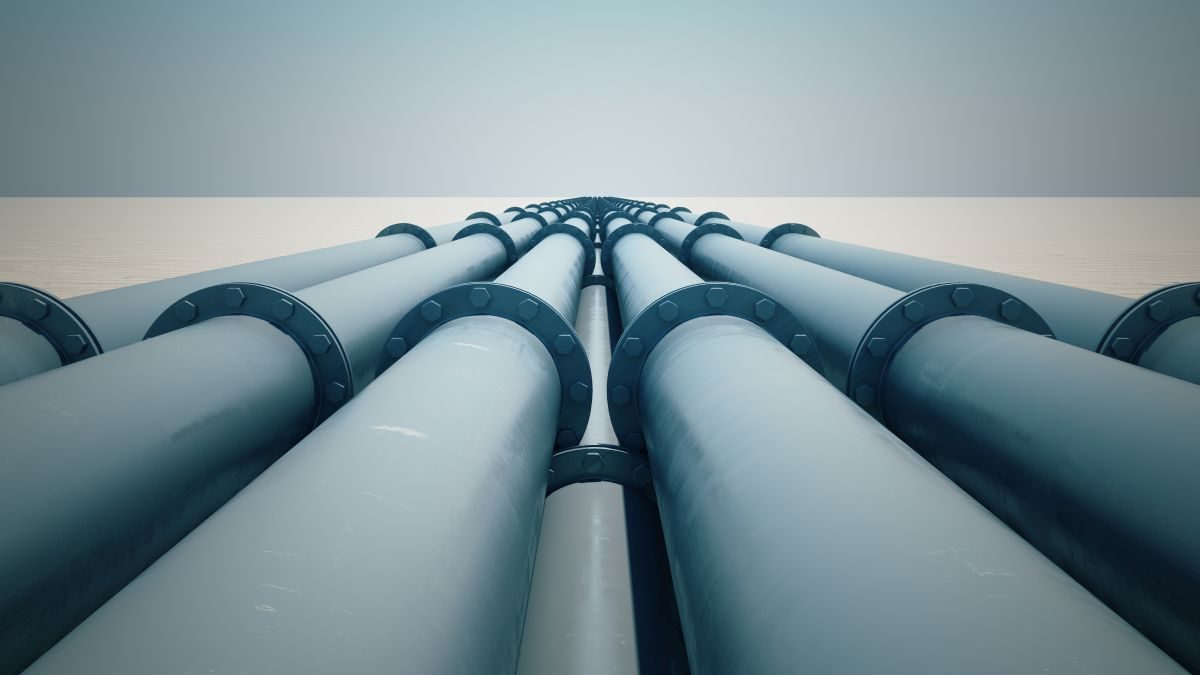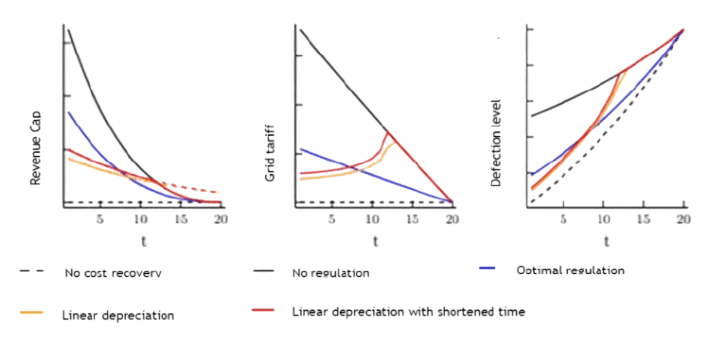
The decarbonisation of the energy sector is leading to a massive decline in the use of fossil fuels. In many European countries, however, the gas network has not yet been fully amortised. Political decisions and technological developments are making the use of gas for heating increasingly unattractive. Grid operators are therefore faced with the problem that their infrastructure could become stranded assets – i.e. investments that can no longer be refinanced through grid tariffs. A key challenge for regulators is therefore to find the right balance between recovering costs and avoiding excessive burdens for households.
In the working paper “A Day Late and a Dollar Short: Intertemporal Revenue Cap Regulation Considering Stranded Assets”, Maria Nussberger, Hendrik Diers and Philipp Artur Kienscherf analytically derive revenue caps for network operators. These are welfare-optimal given the desired degree of refinancing of the Capital expenses. The research was funded by the Germann Federal Ministry of Education and Research as part of the Kopernikus project ENSURE.
In a regulated gas network with falling demand, network operators have limited room for manoeuvre when setting network tariffs. If these are set too high, households will defect to other heating technologies such as heat pumps sooner. As a result, fewer gas heating systems remain in the grid, which in turn spreads the costs over an ever smaller number of households. This can trigger a “death-spiral” in which rising charges push the remaining households to move away.
In a regulated gas network with falling demand, network operators have limited room for manoeuvre when setting network tariffs. If these are set too high, households will defect to other heating technologies such as heat pumps sooner. As a result, fewer gas heating systems remain in the grid, which in turn spreads the costs over an ever smaller number of households. This can trigger a “death-spiral” in which rising charges push the remaining households to move away.
The research paper shows that degressive depreciation is the welfare-optimised approach. In this approach, grid charges are set higher in the first few years and then gradually reduced. In this way, revenues for refinancing the grid can be realised at an early stage when many households are still connected to the grid. This minimises the risk of an abrupt grid exodus and reduces the social costs of unamortised investments.
In many countries, including Germany and Austria, the depreciation of gas grid investments has so far been linear and over long periods of time – often longer than the politically desired phase-out of fossil gas. This practice means linear revenue caps, which means that network charges initially remain low but then rise sharply. “Our analysis shows that this approach both makes cost recovery more difficult and places an unequal burden on households”, says Philipp Artur Kienscherf, Head of Research Area Regulation at the EWI. Households that can only defect to alternative heating technologies at a late stage would be particularly affected.

This microeconomic analysis comes to a similar conclusion to the decision of the German Regulator (BNetzA) to allow a degressive depreciation of 15 per cent for newer gas grids. Both approaches aim to distribute the financial burden more evenly and support an efficient transformation of the heating sector.